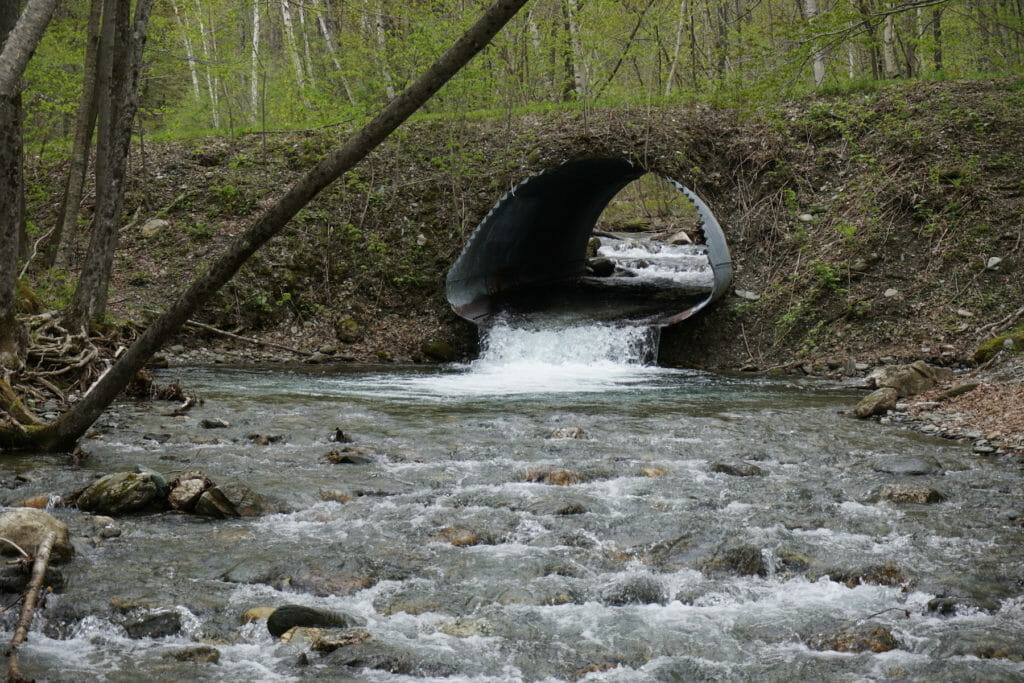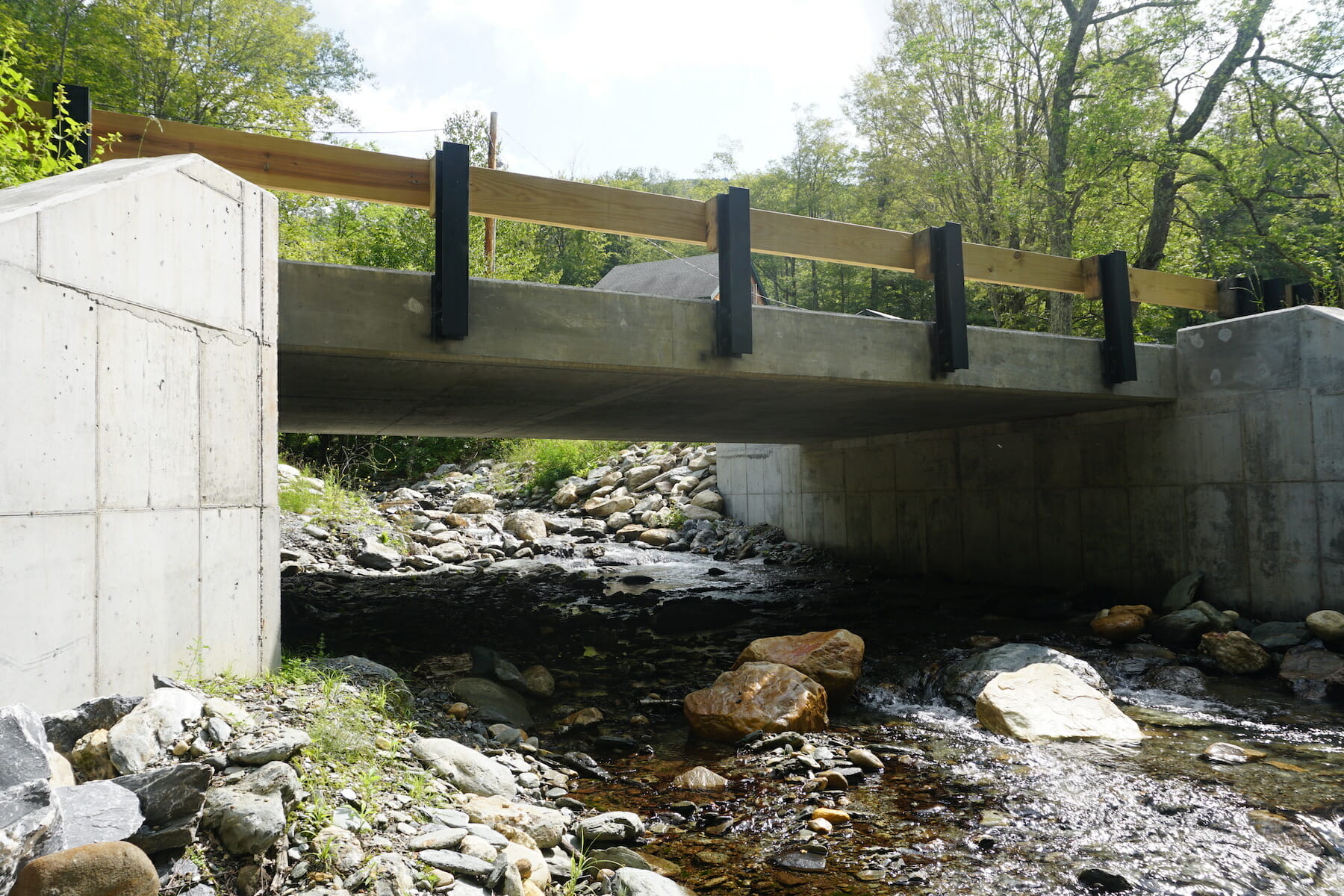Replacing perched and undersized culverts with bridges allows fish and other stream-dwelling residents access to important, additional habitat.
By Erin Rodgers
Trout Unlimited’s ambitious work on the Mettawee River in Vermont moved forward in earnest in 2018 setting the stage for continuation of the effort in 2019.
This ongoing project aims to remove or restore all barriers fish passage between the headwaters in the Green Mountain National Forest and the main stem of the Mettawee.
Allowing fish to move back and forth between the headwaters and the Mettawee will allow native trout to reach good spawning and rearing habitat, and also allow temperature-sensitive trout to seek out cold water refuge during the warmer months.
TU has addressed three of the six total barriers so far.
Two culverts were removed and replaced by bridges. To facilitate passage around a small wooden weir, a rock ramp was installed at another barrier.

Three barriers remain, including a larger dam, a small dam, and a bridge with a concrete bottom that has resulted in a significant perch at the downstream end.
All of these structures are privately owned. TU staffers spent much of 2018 working with landowners to discuss permission to remove or replace these structures, as well as addressing new potential designs and project timelines.
TU has worked with the U.S. Forest Service and the U.S. Fish and Wildlife Service to complete topographic surveys at the barriers. Our partners will be help with natural channel restoration using the USFS StreamSim method.
We hope to restore at least one of the three remaining barriers during the upcoming 2019 field season.
Erin Rodgers is the project coordinator for Trout Unlimited’s New England Coldwater Restoration Program.



